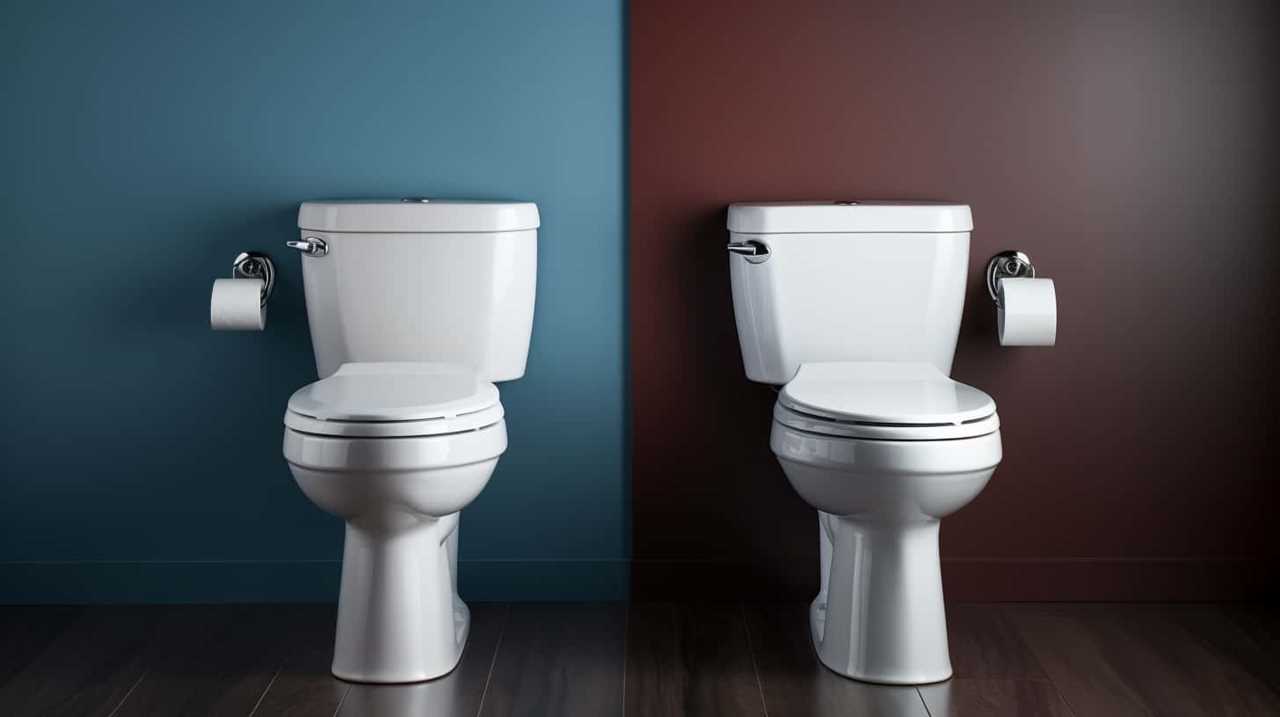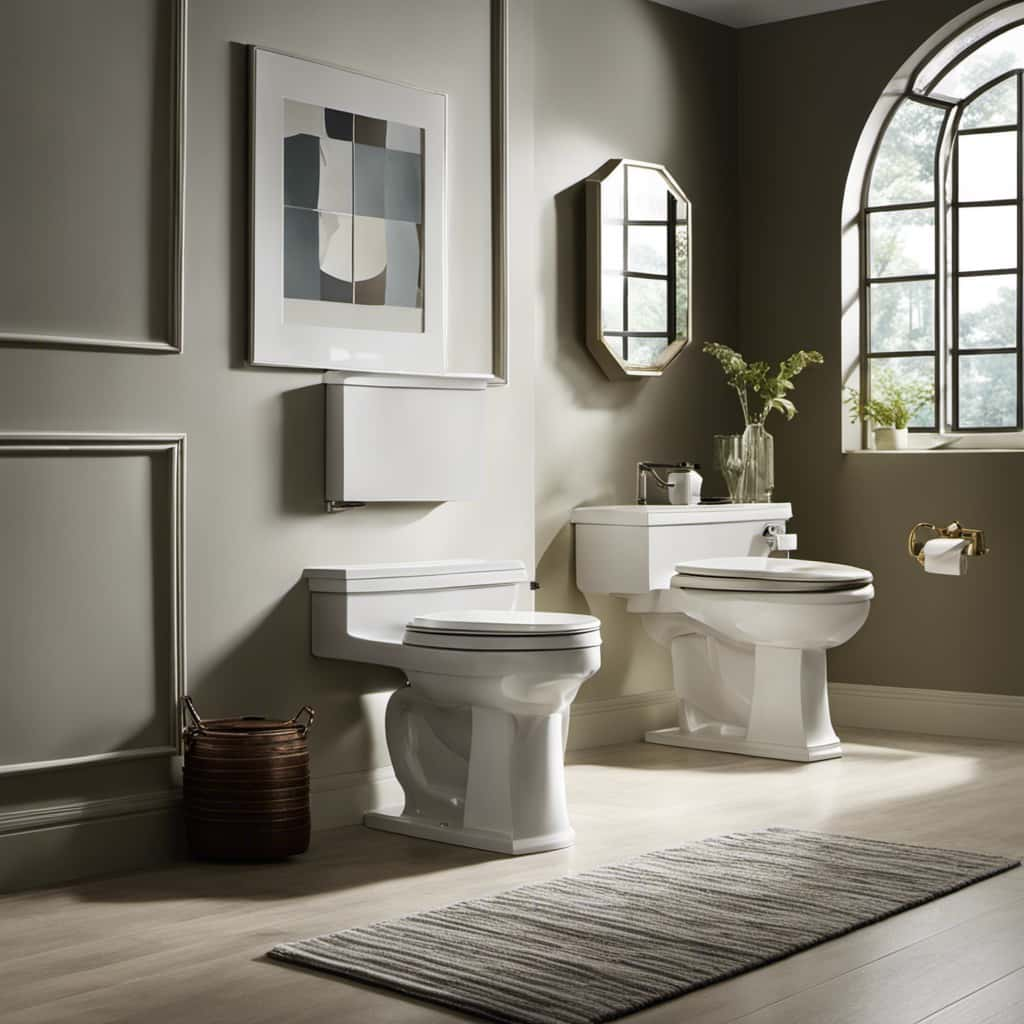Have you ever found yourself in a sticky situation with a broken toilet handle? Fear not, for we have the solutions you seek.
In this article, we will guide you through the steps to successfully flush a toilet with a broken handle.
From assessing the handle’s condition to utilizing temporary replacements or DIY repair kits, we’ve got you covered.
So, let’s dive in and master the art of flushing a toilet with a broken handle!
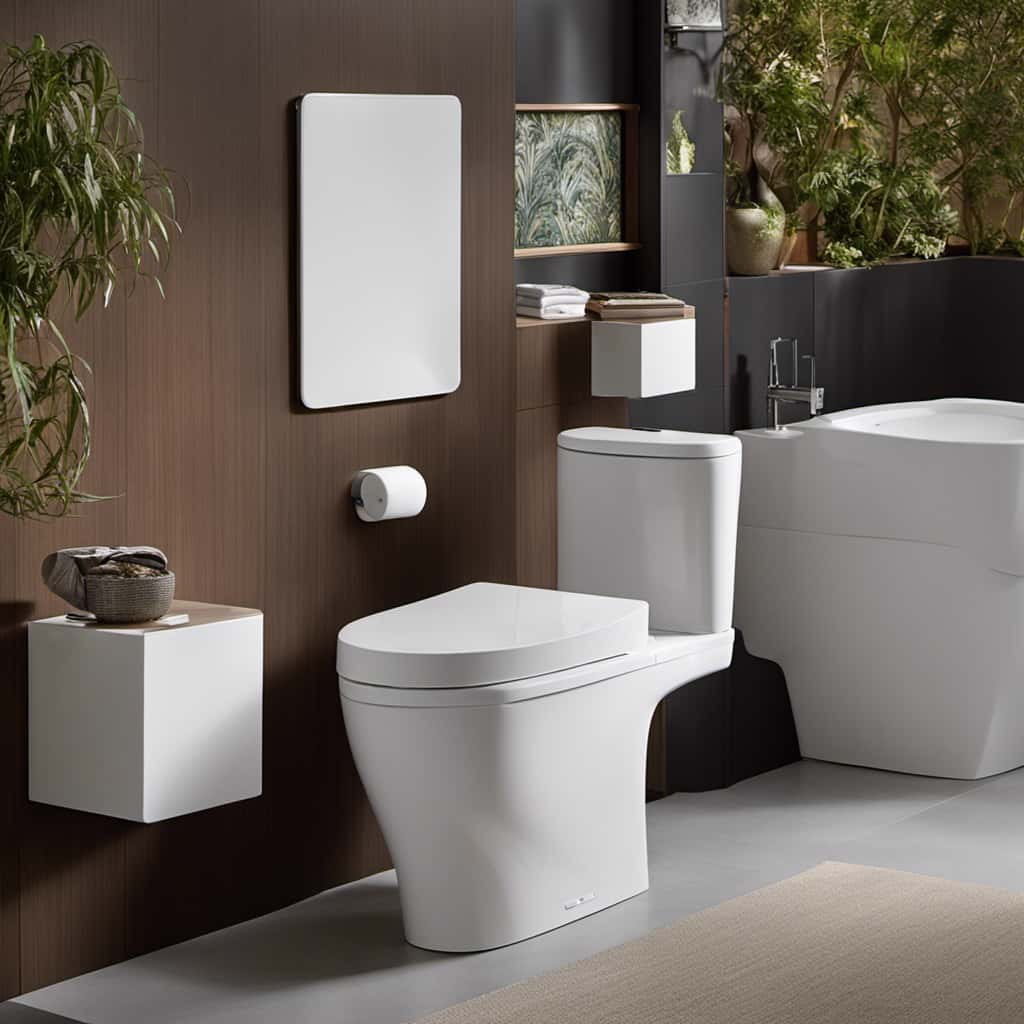
Key Takeaways
- Assess the condition of the handle by checking for visible damage and testing its functionality
- Try the manual flush method by lifting the flush valve or adjusting the chain/lever connected to it
- Consider using a temporary handle replacement, such as a zip tie or strong string, until a permanent replacement is obtained
- Explore DIY handle repair kits as they offer solutions for common toilet handle problems, including handle replacement and adjustment mechanisms
Assess the Handle’s Condition
To assess the handle’s condition, we need to carefully examine its physical integrity and functionality.
The first step is to check for any visible signs of damage, such as cracks or breakage. A damaged handle may not function properly, making it difficult to flush the toilet.
We should also test the handle’s functionality by attempting to flush the toilet. If the handle feels loose or doesn’t return to its original position after flushing, it could indicate a problem with the mechanism inside.
Additionally, we should ensure that the handle is securely attached to the toilet tank and that there are no loose or missing screws.
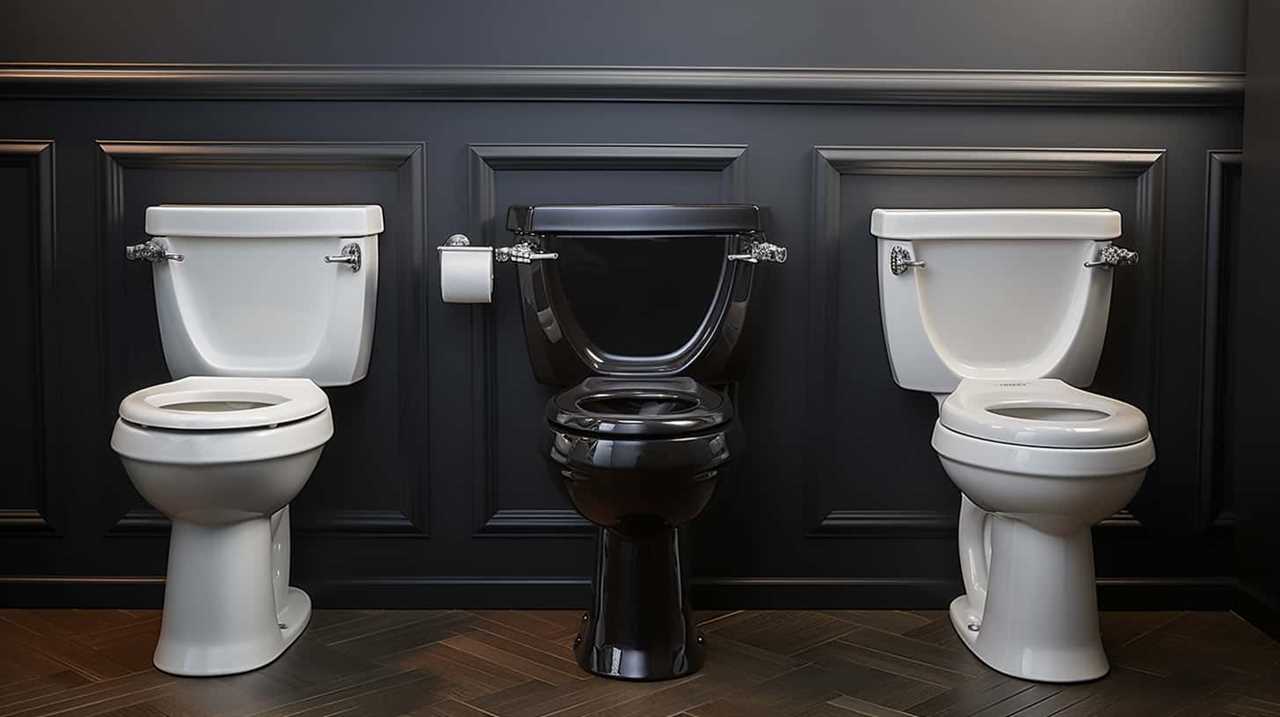
Try the Manual Flush Method
Continuing from assessing the handle’s condition, we can try the manual flush method as an alternative solution. If the handle is broken or not functioning properly, there are steps we can take to troubleshoot the flushing issue. Here are some key points to consider:
- Locate the flush valve: Find the flush valve, usually located at the bottom of the toilet tank. It’s connected to the handle by a chain or lever.
- Lift the flush valve: Using your hand or a tool, lift the flush valve to release the water into the toilet bowl. This will manually initiate the flushing process.
- Adjust the chain or lever: If the handle is broken, try adjusting the chain or lever connected to the flush valve. This may help in achieving a proper flush.
- Consider replacing the handle: If the manual flush method isn’t effective, it might be necessary to replace the broken handle. Purchase a suitable replacement handle and follow the manufacturer’s instructions for installation.
Utilize a Temporary Handle Replacement
To temporarily replace a broken handle, we can utilize a makeshift solution. There are a few temporary handle alternatives that can be used to troubleshoot common toilet handle issues.
One option is to use a zip tie or a strong piece of string as a makeshift handle. Simply loop the zip tie or string through the hole where the handle used to be and tie it securely.
Another option is to use a pair of pliers or a wrench to manually lift the lever inside the toilet tank to flush. This requires removing the lid of the tank and reaching inside to locate the lever. However, it’s important to exercise caution and not apply excessive force to avoid damaging the internal components of the toilet.
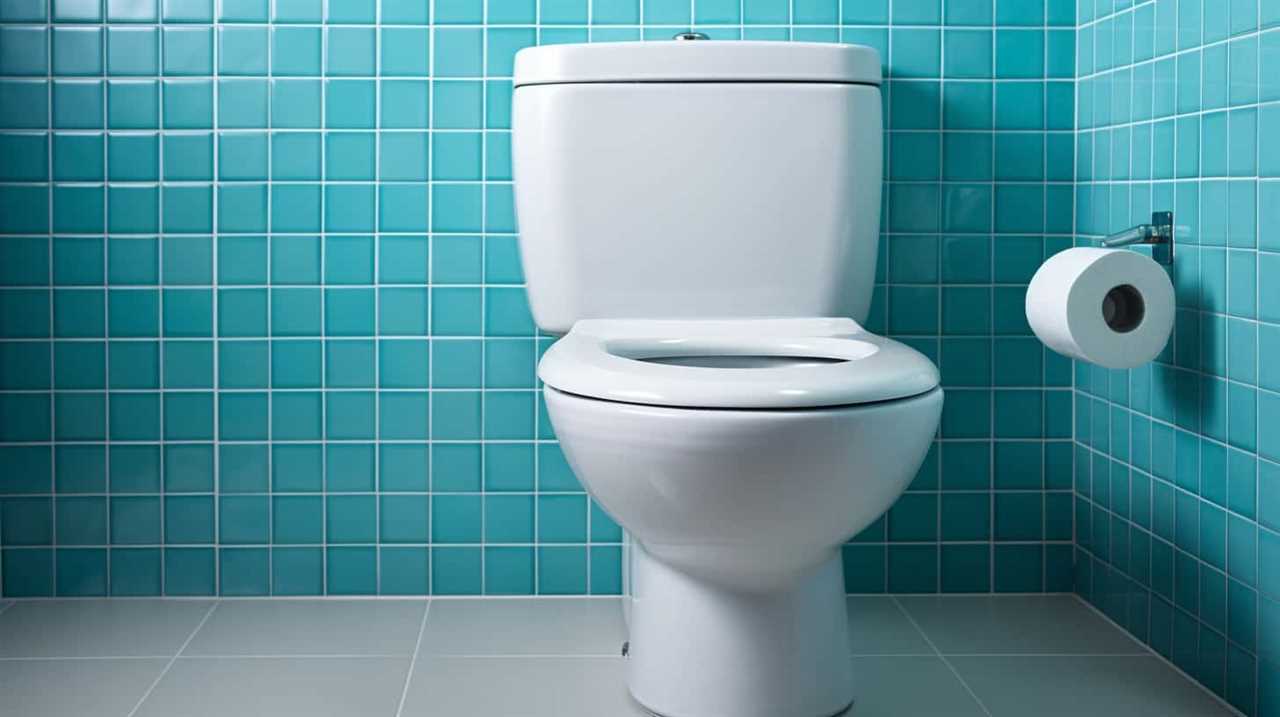
These temporary solutions can be helpful until a permanent handle replacement can be obtained.
Consider Using a DIY Handle Repair Kit
We can use a few different options available in a DIY handle repair kit. These kits are designed to provide alternatives for troubleshooting common toilet handle problems. Here are some key options to consider:
- Replacement handle: The kit often includes a replacement handle that can be easily installed to replace the broken one.
- Lever arm adjustment: If the handle is loose or not functioning properly, the kit may provide a lever arm adjustment mechanism to fix the issue.
- Chain length adjustment: Sometimes, the chain connecting the handle to the flapper may be too long or too short. The kit may include tools to adjust the chain length for optimal performance.
- Flapper replacement: In some cases, the problem may not be with the handle itself, but with the flapper. The kit may offer a replacement flapper to resolve the issue.
Seek Professional Help if All Else Fails
If all else fails, let’s consider seeking professional help for fixing a toilet with a broken handle. While DIY handle repair kits and alternative flushing methods can be helpful, there are instances when the problem might be more complex and require the expertise of a professional plumber. Troubleshooting common toilet handle issues can be challenging, especially if you’re not familiar with the inner workings of a toilet. A professional plumber has the knowledge and experience to quickly diagnose and fix the problem, ensuring that your toilet is back in working order. Additionally, they can provide valuable advice on maintenance and prevention to avoid future issues. Don’t hesitate to reach out to a professional if you’ve exhausted all other options and are still unable to flush your toilet properly.
| Pros of Seeking Professional Help | Cons of Seeking Professional Help | Considerations |
|---|---|---|
| Expertise in diagnosing and fixing complex toilet handle issues | Cost of hiring a professional plumber | Consider your budget |
| Quick and efficient repairs | Can be time-consuming to find a reliable plumber | Research reputable plumbers |
| Valuable advice on maintenance and prevention | Lack of DIY experience and knowledge | Assess your own capabilities |
Frequently Asked Questions
Are There Any Safety Precautions to Keep in Mind While Attempting to Flush a Toilet With a Broken Handle?
When flushing a toilet with a broken handle, it’s important to consider safety precautions. We can explore alternative methods for flushing and discuss how to prevent further damage when using a temporary handle replacement.
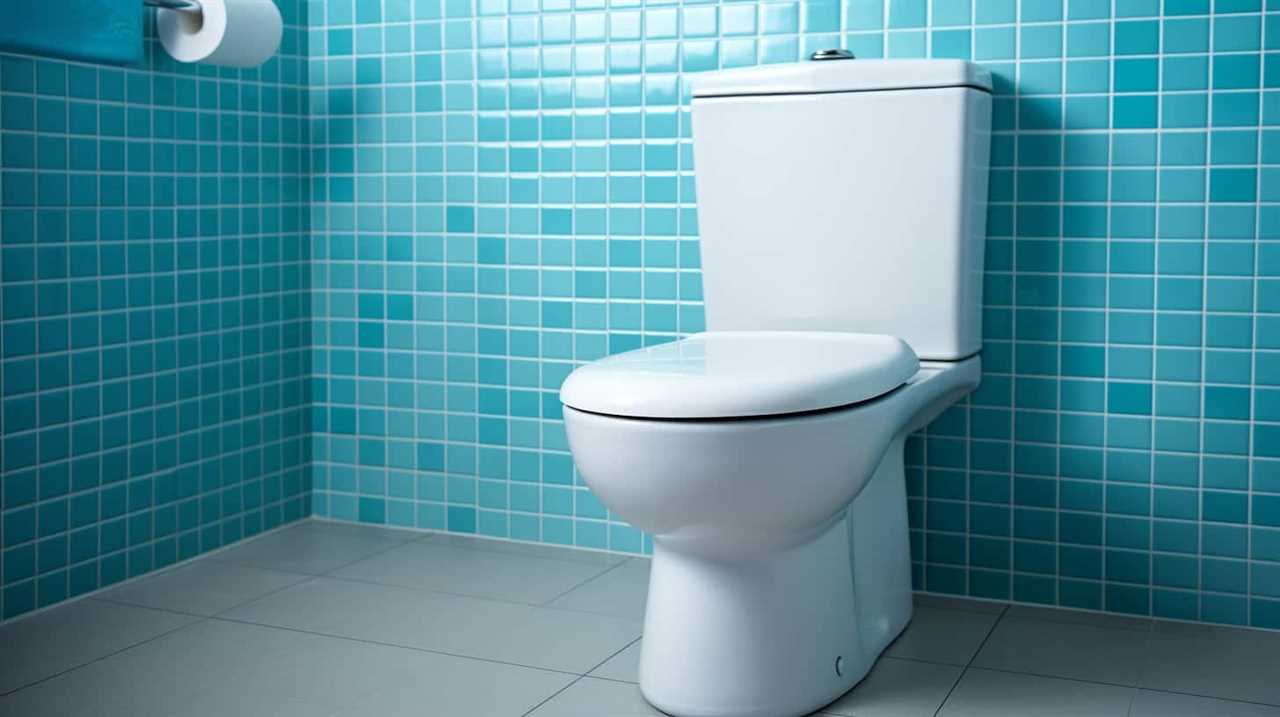
Can I Use Any Object as a Temporary Handle Replacement?
We can explore temporary handle alternatives, but caution is needed. Using an object as a replacement can potentially damage the toilet further, leading to costly repairs. Let’s dive into the technicalities and find a mastery solution.
What Are the Common Signs of a Broken Toilet Handle?
Common signs of a broken toilet handle include difficulty in flushing, a loose or wobbly handle, or the handle not springing back properly. To fix it without specialized tools, try adjusting the chain or replacing the handle.
Is It Possible to Fix a Broken Toilet Handle Without Any Specialized Tools?
Yes, it is possible to flush a toilet with a broken handle using alternate methods such as using a bucket of water or a makeshift lever. DIY techniques can also temporarily fix a broken handle.
How Much Does It Typically Cost to Hire a Professional to Fix a Broken Toilet Handle?
The cost of hiring a professional to fix a broken toilet handle can vary depending on the extent of the damage and the plumber’s rates. Common causes of broken toilet handles include wear and tear or excessive force.
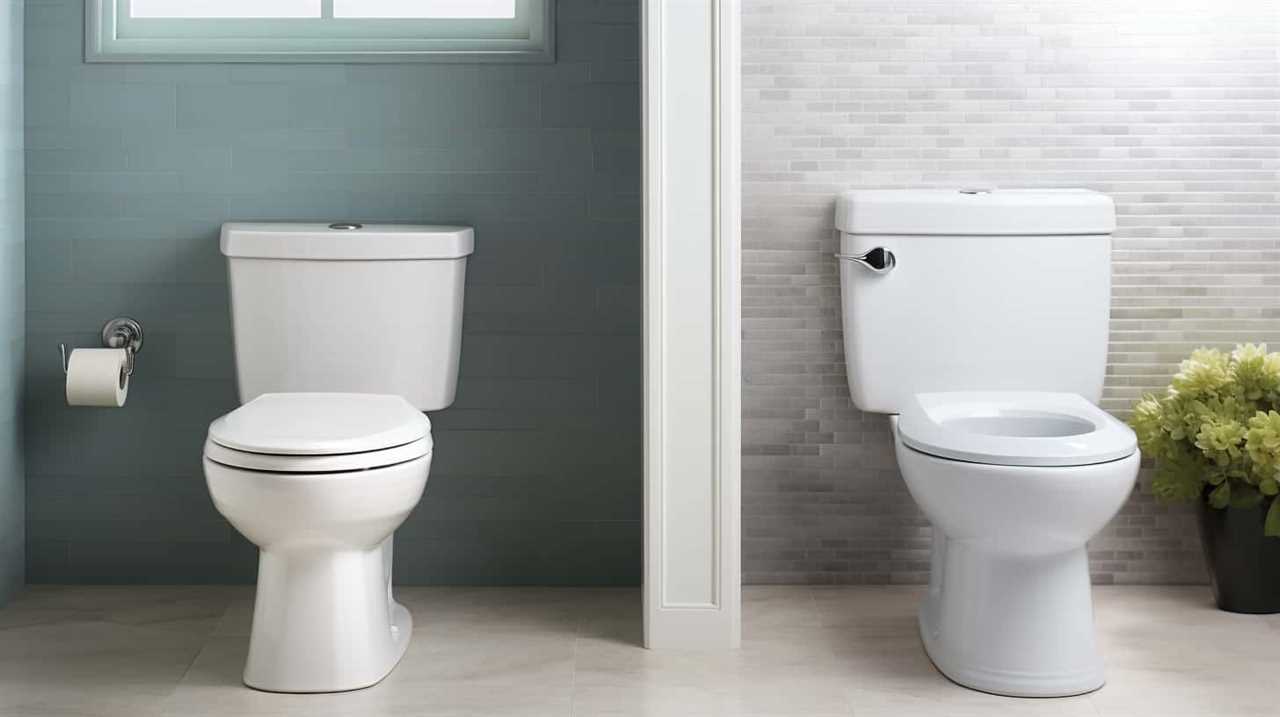
Conclusion
In conclusion, when faced with a broken toilet handle, it’s important to assess its condition and try the manual flush method.
If that doesn’t work, consider using a temporary handle replacement or a DIY repair kit.
And if all else fails, seek professional help.
Remember, just like a ship navigating rough waters, a broken toilet handle can be overcome with the right tools and guidance.
